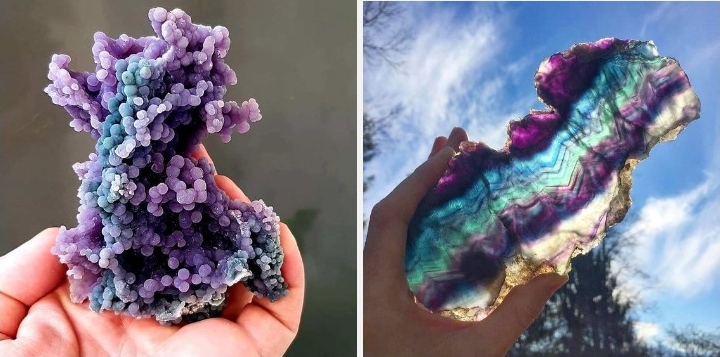Nature has so many wonderful things to offer like magnificent landscapes, mountains, rivers, lakes and waterfalls. However, we tend to forget about the smaller things, since they are not immediately visible as they are hidden underground. Here, we are referring to the world of crystals and minerals, which can be of unique and striking beauty.
But do you know the difference between a crystal and mineral? Or perhaps you thought that there was none at all. A crystal is any solid that has an organized structure. This means that the atoms are positioned in very accurate distances and angles one from the other, as opposed to glass for example, in which the atoms are in a more or less random arrangement. Minerals, on the other hand, are inorganic, naturally occurring substances that have crystalline structures. So, it is a prerequisite to be a crystal in order to be a mineral. Therefore, it can be said that all minerals form crystals.
With more than 4000 naturally occurring minerals in the world, we have compiled a list of some of the most captivating ones. Here are 18 of the most beautiful crystals and minerals, for you to feast your eyes on.
1. Olivenite crystals
Olivenite is a copper arsenate mineral and crystallizes in the monoclinic system. The piece shown in this photo has formed on Conichalcite. As the name suggests, it is of olive-green color, which varies in shade from yellow or brown, gray-green, grayish white or light green in transmitted light. More commonly, olivenite occurs as globular aggregates of acicular crystals, these fibrous forms often having a velvety luster; sometimes it is lamellar in structure, or soft and earthy.
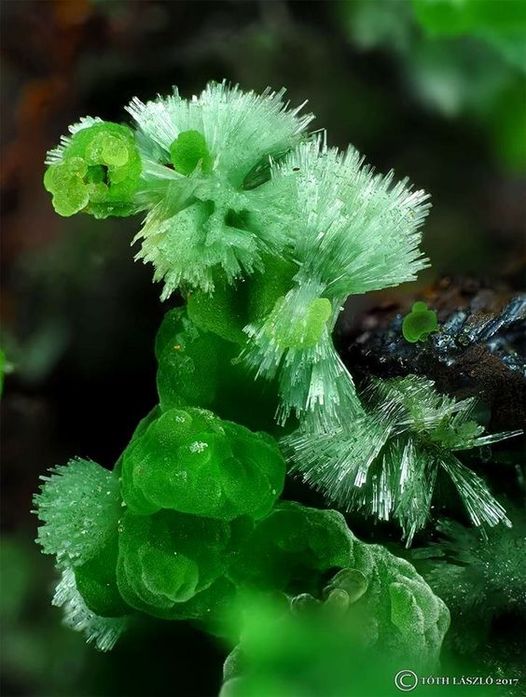
2. Agate stone
Agate is a common rock formation, belonging to the quartz family, under the chalcedony group. They occur in a variety of colors and are common in volcanic rock all over the world, where they fill veins or cracks in the rock. Lace agate is a variety that displays a lace-like pattern with forms such as eyes, swirls, bands or zigzags. The stone is usually colored red and white, but is also seen to exhibit yellow and gray combinations as well. Currently, the main sources of agate in the world are Brazil, India, and the United States.
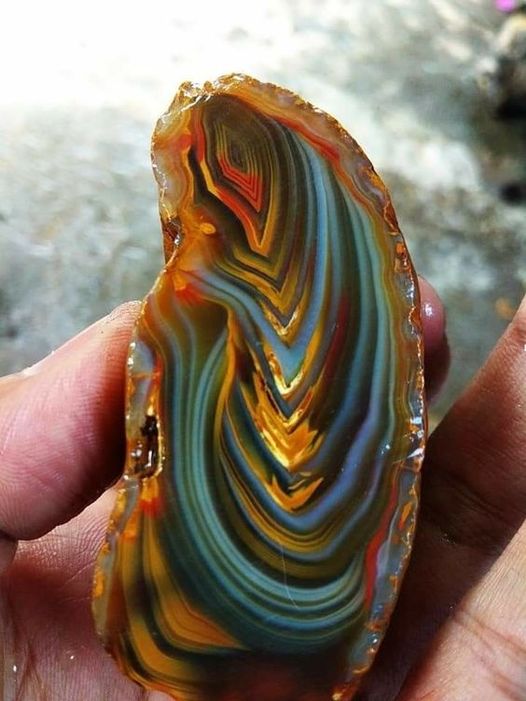
3. Grape Agate
Botryoidal Purple Chalcedony is the actual name for this mineral, while Grape agate is the marketing name. Botryoidal stands for round, tiny sphere shaped crystals that have naturally formed together. The name “Grape Agate” alludes to their purple color and how they occur in clusters that resemble bunches of grapes. These “grapes” are tiny, ranging between 2 – 8 mm across and some specimens can occur in various colors like white, gray, green, or blue.

4. Rainbow fluorite
Fluorite (also called fluorspar) is the mineral form of calcium fluoride. Pure fluorite is colorless and transparent, both in visible and ultraviolet light, but it shows as a colorful mineral due to impurities. Rainbow Fluorite displays a combination of colors inherent in Fluorite crystals, such as purple, blue, green, clear and yellow, in one colorful crystal. It appears striped, and ranges from transparent to opaque.
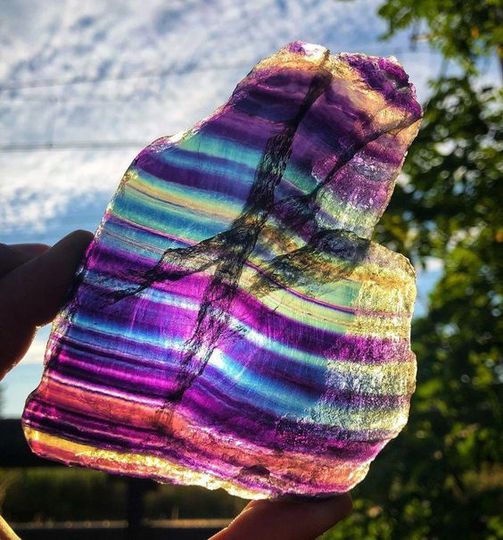
5. Apophyllite (on Stilbite host)
The name Apophyllite refers to a specific group of phyllosilicates, a class of minerals. It is derived from the Greek “apophylliso”, meaning “it flakes off”, a reference to this class’s tendency to flake apart when heated, due to water loss. Apophyllites are usually found as secondary minerals in vesicles in basalt or other volcanic rocks. These minerals are quite widespread, with specimens coming from some well-known mineral localities around the world such as Jalgaon in India, the Harz Mountains of Germany, Mont Saint-Hilaire in Canada, and Kongsberg in Norway.
Read Also: The Waitomo Glowworm Caves – An Out Of This World Light Show Experience!
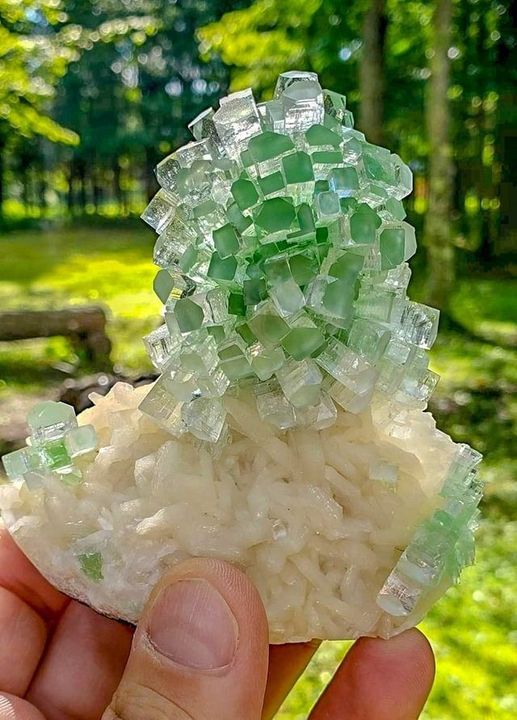
6. Clinoclase
Clinoclase is a rare secondary copper mineral and forms acicular crystals in the fractured weathered zone above copper sulfide deposits. It is named after the Greek words “klino” which stands for “incline” and “klasma” which means “fraction” in reference to the inclined cleavage planes. Clinoclase is vitreous, translucent dark blue to dark greenish blue or greenish black in color and in transmitted light, it appears blue-green. Crystals form are rare, and usually the mineral is needle-like or tabular as rosettes, and radial fibrous spherical aggregates as crusts and coatings.
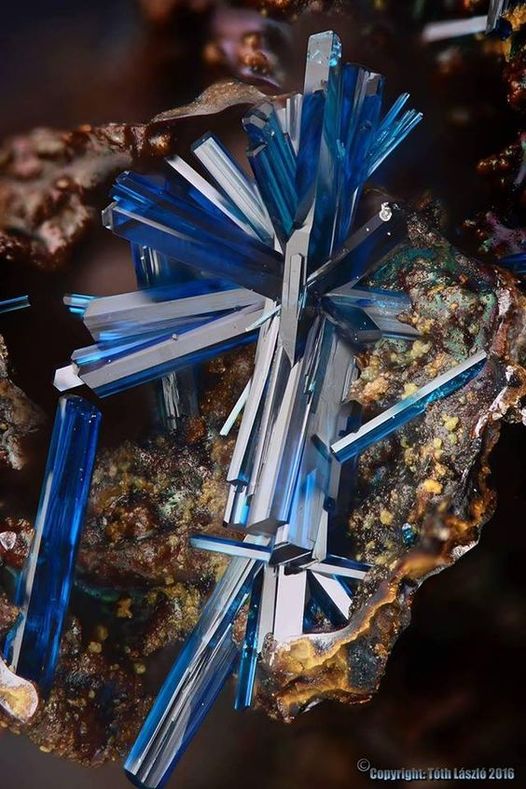
7. Red Fox Agate
Red Fox Agate is a rare and geologically unique geode from a remote part of the Argentinean Andes, believed to be of volcanic nature. Its inner bubbled surface consists of Botroydial Hematite, which is then surrounded by agate. Its outmost layer is UV reactive and when placed under fluorescent lighting, the crystal is illuminated with colors of lime green.
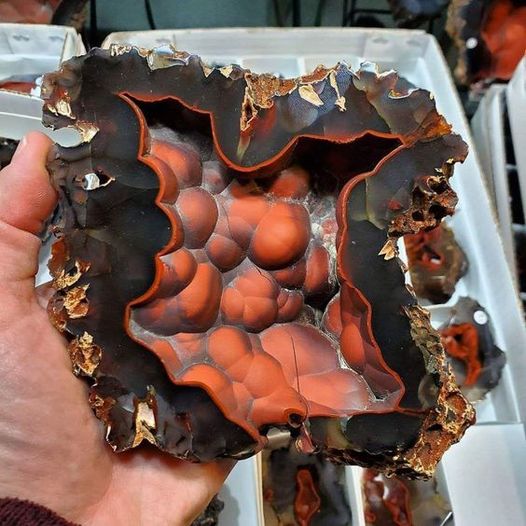
8. Aragonite
Aragonite is a carbonate mineral, one of the three most common naturally occurring crystal forms of calcium carbonate. The piece in the photo shows Aragonite sprays in clay and is seen under fluorescent light. Normally, it is found in Molina de Aragón in the Province of Guadalajara in Castilla-La Mancha, Spain, after which it was named in 1797. It is formed by biological and physical processes, including precipitation from marine and freshwater environments. Aragonite may be columnar or fibrous, occasionally in branching helictitic forms called flos-ferri (“flowers of iron”).
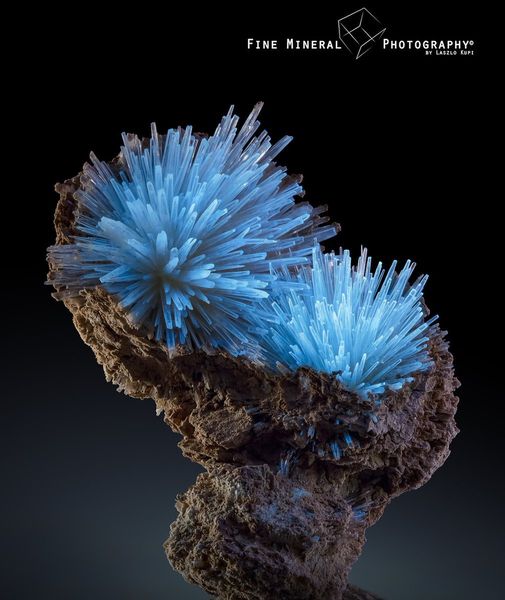
9. Red Spessartite Garnet
Spessartite garnet is an orange to red-brown gemstone that belongs to the large and varied garnet species of gems. The garnet group can be classified into two primary classes, namely pyrospites (aluminum) and ugandites (calcium) garnets. The name, “spessartine” originates from the Bavarian word, “Spessart”, which means “forest”. Spessart is a mountain range in the States of Bavaria and Hesse in Germany, where spessartine garnet deposits were found in the 1880s.
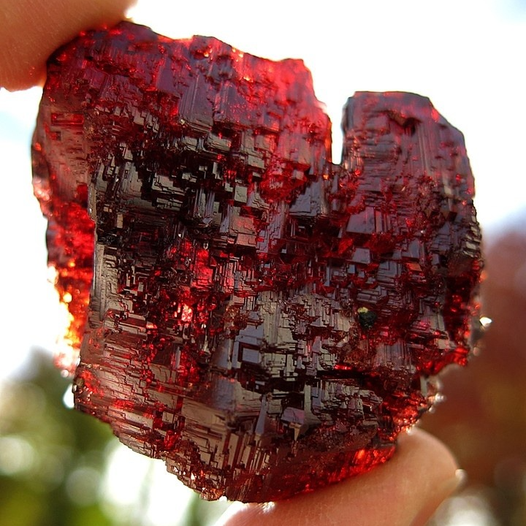
10. Malachite
Malachite is a mineral that forms at shallow depths within the Earth, in the oxidizing zone above copper deposits. It is rarely found as a crystal, however the crystals are typically acicular to tabular in shape and bright green in color, translucent, and with a vitreous luster. Malachite has been used as a pigment for thousands of years. This mineral is an excellent material for producing a powdered pigment, as it can easily be ground into a fine powder. It was one of the oldest known green pigments to be used in paintings, and its green color does not fade over time or when exposed to light.
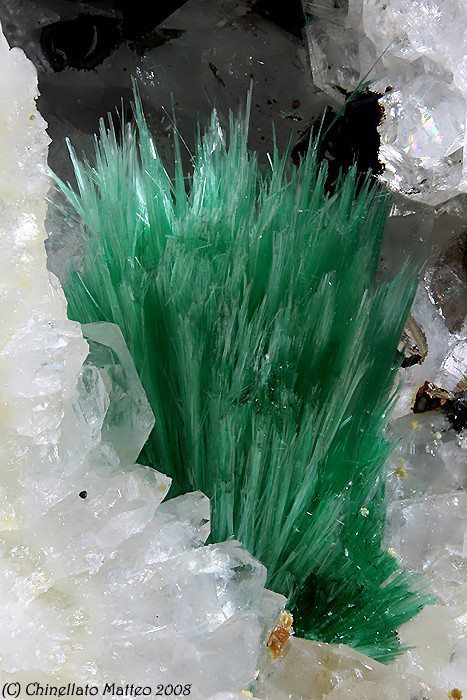
11. Smoky quartz cluster
Smoky quartz is the dark form of quartz with color ranging from light gray to yellowish brown, to opaque black. It is found in many parts of the world where quartz is found, but mainly in Brazil, Scotland (UK), parts of the Swiss Alpines, Australia, and Madagascar. Smoky quartz varies in clarity from almost complete transparency to an almost-opaque brownish-gray or black crystal. It obtains its color from the radiation of colorless quartz while the crystal is still forming in a semi aqueous solution, and the presence of sodium and aluminum in its composition.
Read Also: Norwegian Photographer Makes Droplets Of Liquid Look Like Blown Glass Sculptures
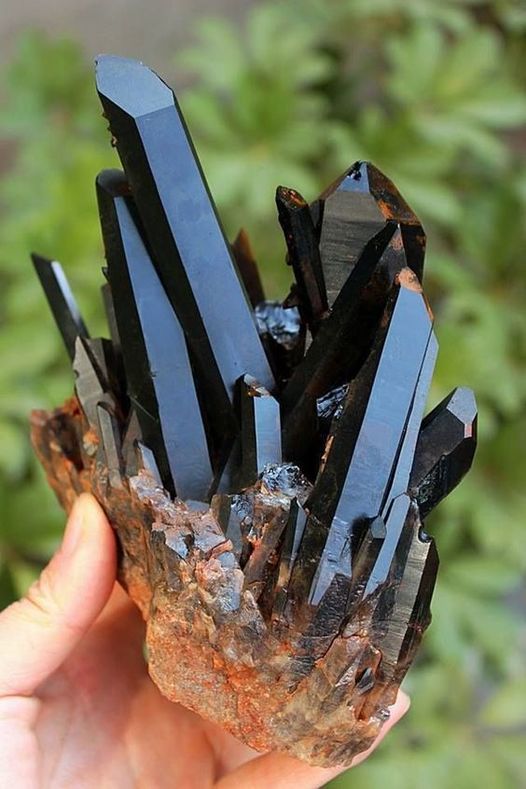
12. Green Veszelyite
Veszelyite is a rare secondary copper and zinc mineral that’s found in the oxidation zones of base metal deposits. Crystals of veszelyite are typically emerald-green, blue or a mixture of the two. They can be found as small, lustrous clusters that are scattered over other minerals or as crusts. In rare cases, they can be found as dense crystal aggregations. Within the hemimorphite zone of the Palabanda Quarry, located in the Bouenza Department of the Republic of the Congo, irregularly dispersed formations of Veszelyite were discovered.
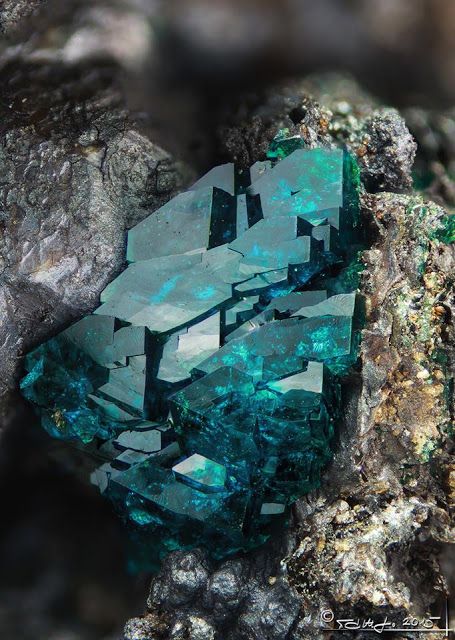
13. Radial Annabergite Crystals
Annabergite is an arsenate mineral consisting of a hydrous nickel arsenate, crystallizing in the monoclinic system and isomorphous with vivianite and erythrite. It was named by Henry J. Brooke and William Hallowes Miller in 1852 after one of the co-type localities, Annaberg, Saxony, Germany. Annabergite has a bright green color or can be light grey to light apple green or white; it can also be pale rose-red when rich in cobalt. Its characteristic color is easily detectable and was used to spot veins of nickel-bearing ore. It is often found as a green alteration coating on other nickel minerals.
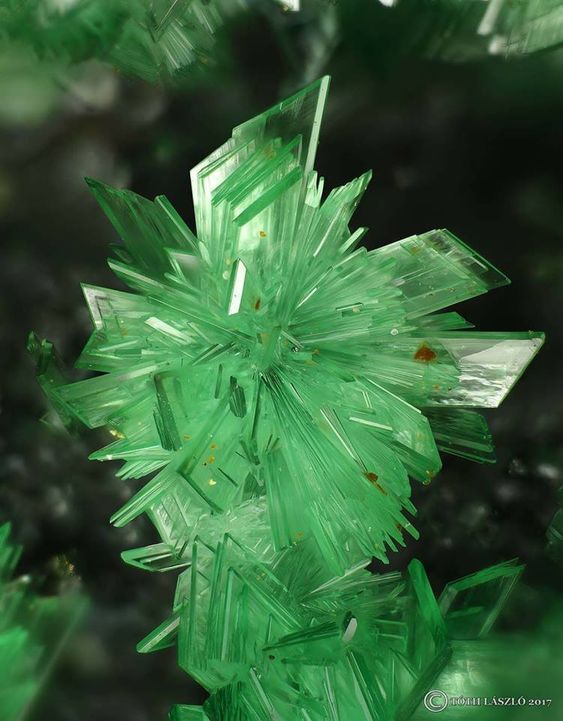
14. Wulfenite
Wulfenite is a lead molybdate mineral, which is most often found as thin tabular crystals with a square or octagonal shape and very narrow mid-section. It can also occur as earthy, granular masses. Crystals can be very flaky and fragile, and are often in platy aggregates. Wulfenite can be bright orange-red to yellow-orange and sometimes brown, though the color can be highly variable. In its yellow form, it is sometimes called “yellow lead ore”. Wulfenite is named in honor of Franz Xavier von Wulfen (1728-1805), an Austrian mineralogist.
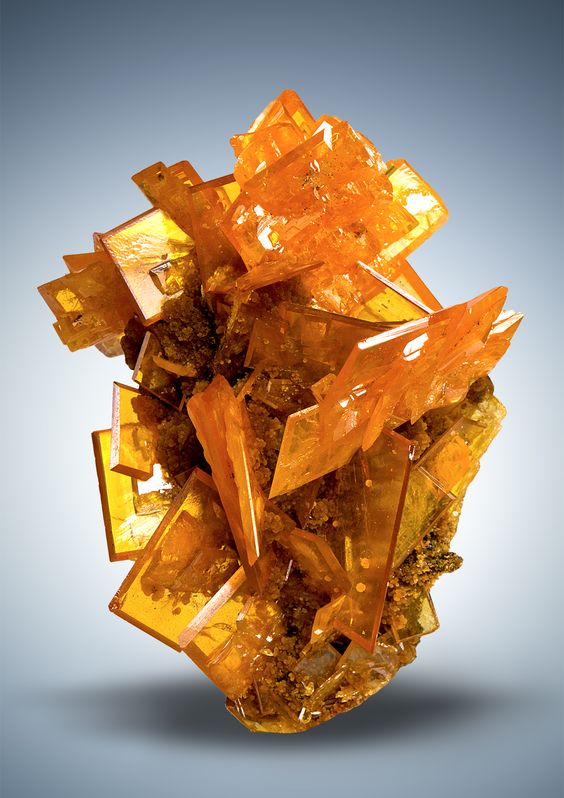
15. Tourmaline (with Lepidolite)
Tourmaline consists of a large group of boron silicate minerals. These minerals share a common crystal structure and similar physical properties, but their chemical compositions vary largely. Thus, tourmaline occurs in more colors and color combinations than any other mineral group. Large, well-formed crystals of tourmaline can form in cavities and fractures during hydrothermal activity, which means that when hot waters and vapors carry the elements needed to form tourmaline into pockets, voids, and fractures, this offers an open space for crystal growth.
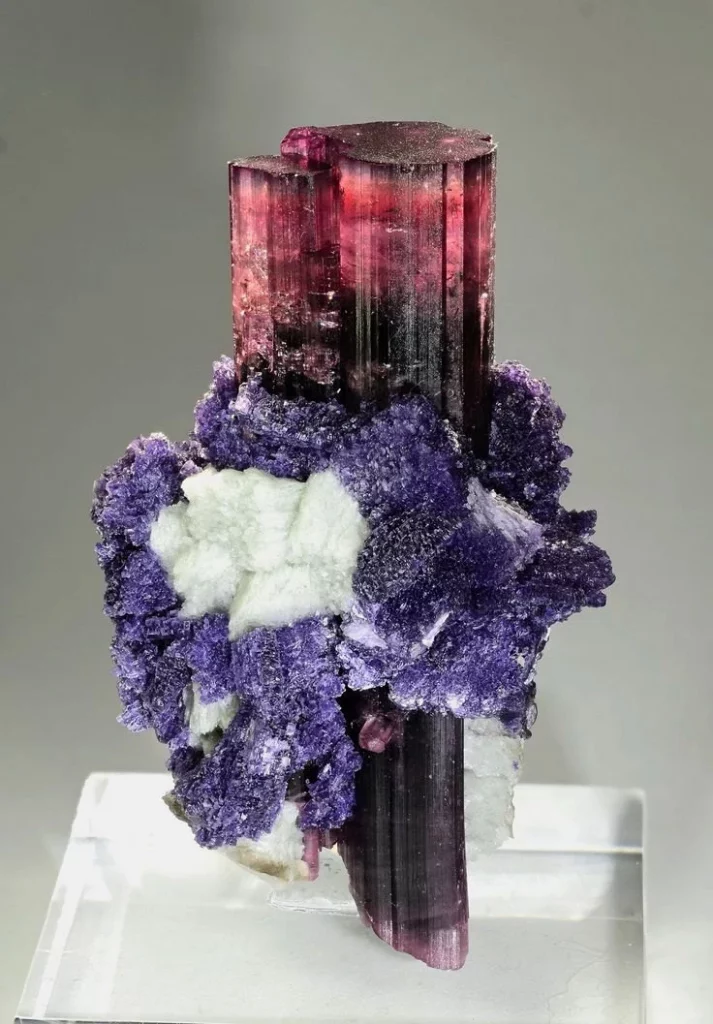
16. Red Beryl
Red beryl is an extremely rare variety of beryl that obtains its red color from trace amounts of manganese. The Utah Geological Survey estimated that one crystal of red beryl is found for every 150,000 gem-quality diamond. Red beryl is a rare mineral due to its formation that requires a unique geochemical environment. Firstly, the element beryllium must be present in large enough amounts to form minerals; secondly, there must be a source of manganese available at the same time and location; thirdly, the correct geochemical conditions must prevail for beryllium, manganese, aluminum, silicon, and oxygen to crystallize into red beryl.
Read Also: 12 Of The Most Spectacular Hummingbirds In The World
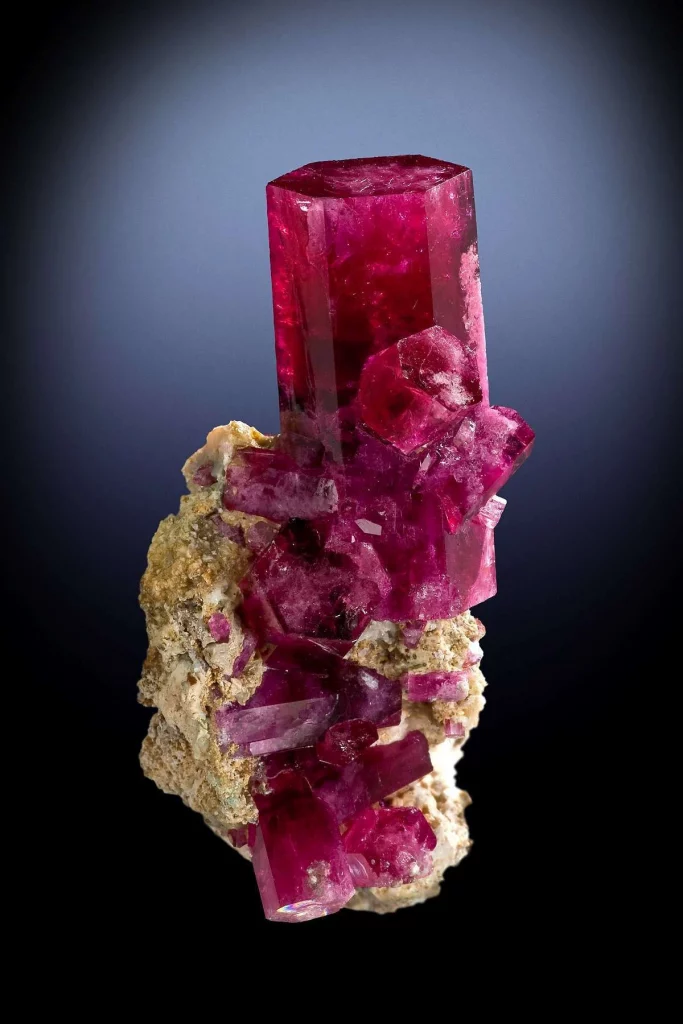
17. Dioptase
Dioptase is an uncommon mineral which forms as a secondary mineral in the oxidized zone of copper sulfide mineral deposits and is found mostly in desert regions. It can be transparent to translucent, has a vitreous to sub-adamantine luster, and is a brilliant emerald-green to bluish-green in color. This copper cyclosilicate mineral is very fragile, and specimens must be handled with great care. As such, it should never be exposed to ultrasonic cleaning or the fragile gem will shatter. As a ground pigment, dioptase can be used in painting.
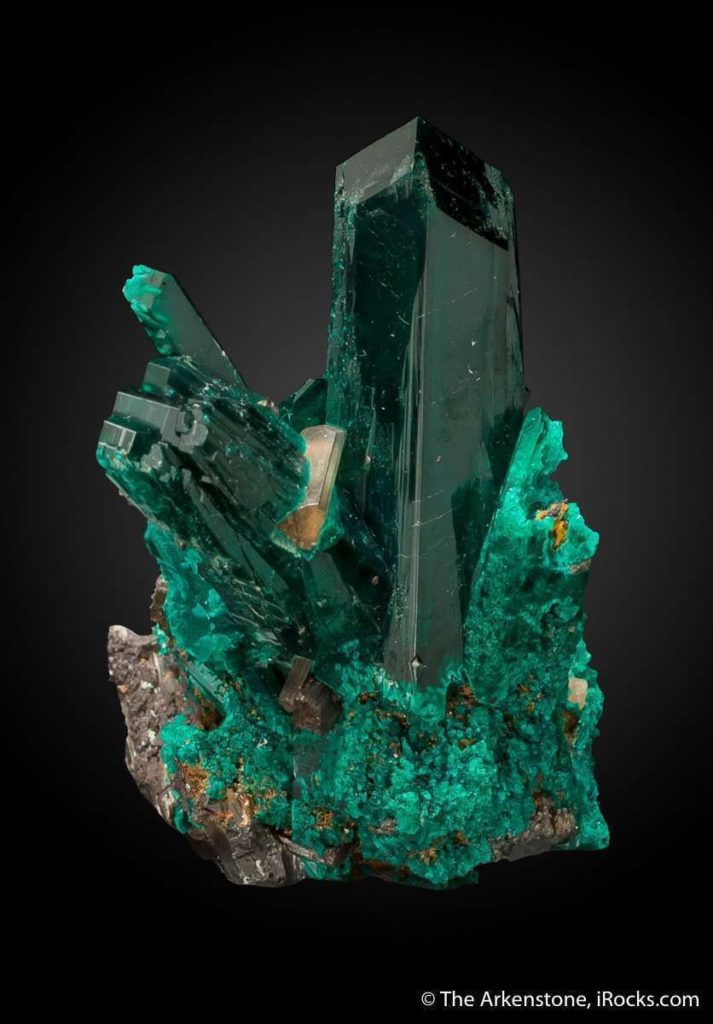
18. Rainbow Obsidian
Rainbow Obsidian, also called Heaven’s Eye, is a black or deep brown Obsidian that is formed when molten lava oozes from the core of the Earth to the surface and solidifies into a beautiful glass of fire and earth. The stone appears black at first glance, but when polished and exposed to a bright light, it displays iridescent bands of red, blue, gold, violet, or green. These beautiful rainbow-colored layers are caused by the refraction of microscopic bubbles and nanoparticle inclusions of the mineral pyroxene.
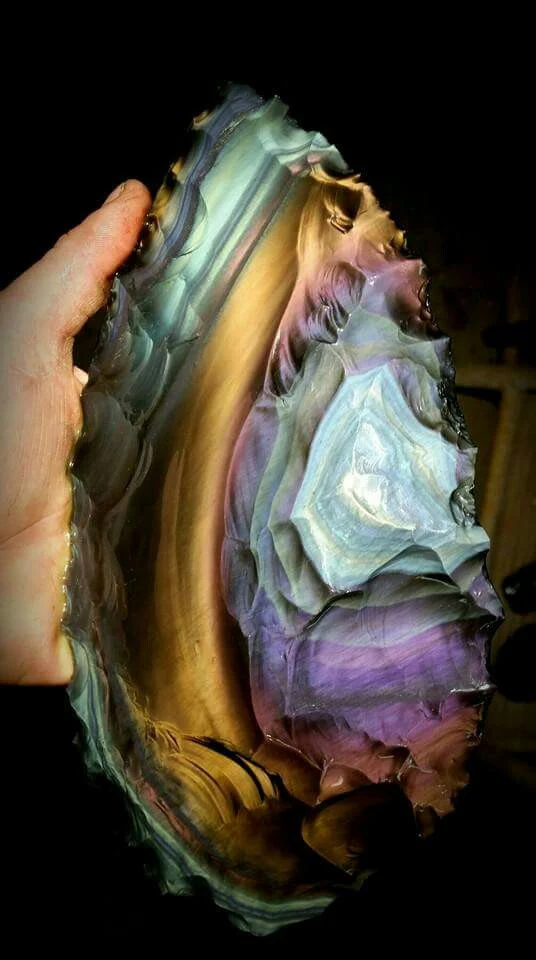
Read more articles:
- Silent Killers of the Sea: Fishing Nets and the Devastating Impact on Our Oceans
- Amazing Ability of Sharks to Regrow Their Dorsal Fins
- Mountain Marvels: 7 Architectural Wonders Built into Nature’s Slopes
- The Frilled Shark: Jaws of the Abyss and a Living Fossil
- 30 Christmas Rock Painting Ideas – Last minute DIY crafts for Christmas decor, gifts and stocking fillers

